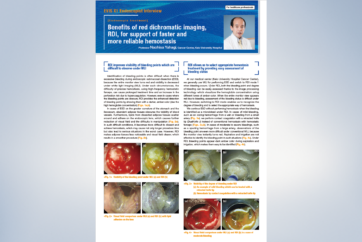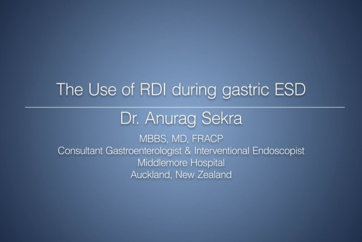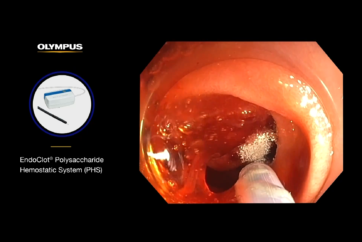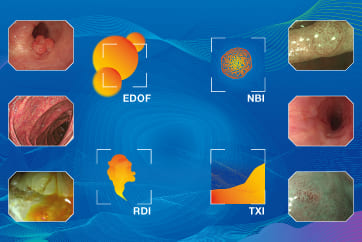ITknife2
Model KD-611L
Dr. Hiroyuki Ono
Shizuoka Cancer Center
Interview With The Expert
It facilitates incision and dissection in total while maintaining the advantages of the conventional ITknife. The incision and dissection speeds have also been increased even more.
However, you have to keep in mind that ITknife2 is quite a bit sharper. If you make the same kind of strokes you’re used to with ITknife, you may cut too deeply and increase the risk of perforation. You should be careful with the knife until you get used to it. It’s also a good idea to use the EndoCut mode. Or step on the high-frequency switch intermittently with a continuous wave mode, to prevent ITknife2 from slipping and causing a perforation. In addition, as with ITknife, laying the knife down too much increases the risk of perforation, so ITknife2’s sheath should be held slightly to upright direction than ITknife. Remember to be careful to avoid problems in the initial introductory phase. However, you won’t need to think about these points once you’ve gotten used to ITknife2 after several uses.
In such a case, point the insulated tip straight toward the muscle layer and swing laterally by manipulating the endoscope or using the angulation function to cut the site little by little.
I have rarely needed to use a needle knife. However, a needle knife offers better cutting performance when an ulcer scar is very hard. In such a case, I use a needle knife until the mucosa is curled up in a certain amount and then I switch to ITknife2.
Applicability of ITknife2
Difficulty per region
○ : Easy. No mark: Ordinary. △ : Difficult.
| Cardiac region | ||
|---|---|---|
| Fornix | △ | |
| Lesser curvature of upper body | ||
| Greater curvature of upper body | △ | |
| Anterior wall of upper body | ||
| Posterior wall of upper body | ||
| Lesser curvature of middle body | ||
| Greater curvature of middle body | ||
| Anterior wall of middle body | ||
| Posterior wall of middle body | ||
| Lesser curvature of lower body | ||
| Greater curvature of lower body | ||
| Anterior wall of lower body | ||
| Posterior wall of lower body | ||
| Lesser curvature of anterior wall | ||
| Greater curvature of antrum | ○ | |
| Anterior wall of antrum | ○ | |
| Posterior wall of antrum | ○ | |
| Pyloric ring | △ |
Note for beginners: It is recommended to start a trial procedure on a minor lesion in the anterior or posterior wall in the antrum or in the
greater curvature. If the endoscope cannot approach the lesion in the lesser curvature of the lower body, it is recommended that you use a
multi-bending endoscope.
*Multi-bending endoscope is not available in some areas.
| Intravenous anaesthesia | Premedication | General anaesthesia | Monitoring |
|---|---|---|---|
| Opistan (pethidine hydrochloride)*, cercine (diazepam)*, midazolam |
Not used | Not used | SpO2, ECG, blood pressure, ETCO2, BIS |
| Electrosurgical unit | VIO-300D (Erbe) |
ICC-200 (Erbe) |
ESG-100 (Olympus Medical Systems) |
|---|
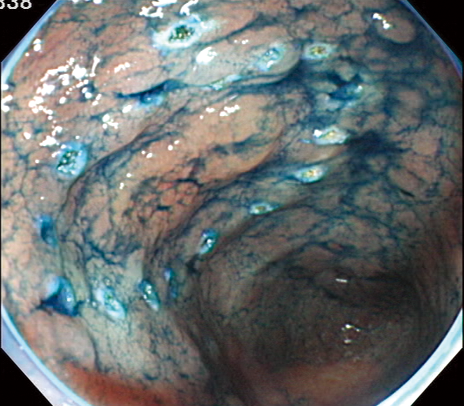
| Device | Caution | Setting | ||
|---|---|---|---|---|
| APC probe | It causes little bleeding in marking and can leave clear marks. | Forced APC Flow1.8L/min 20W |
APC Flow1.8L/min 20W |
|
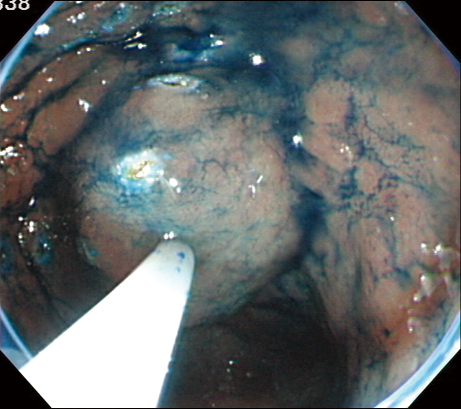
| Epinephrine | Indigo carmine | ||
|---|---|---|---|
| Glyceol (concentrated glycerin fructose)* + MucoUp (sodium hyaluronate)* |
Used (400X dilution) |
Used Appropriate amount |
Advantage: Long lifting time Disadvantage: Bubbles during incision |
| Mix equal amount of Glyceol and MucoUp. Identification of the submucosal layer can be facilitated by submucosal dyeing using indigo carmine. Pale dyeing is applied. | |||
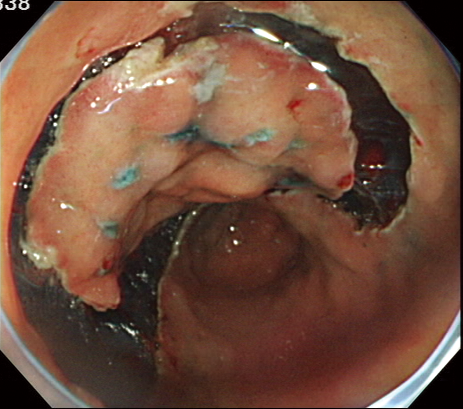
| Device | Caution | Setting | |||
|---|---|---|---|---|---|
| Precutting | Needle knife | Since ITknife2 cuts very well, the cut duration can be 1 when cutting a thin wall in the EndoCut mode. Circumferential incision is possible with the setting for precutting. If bleeding is noticeable, set to SwiftCoag, Effect 5, 60 W. |
DryCut 50W Effect4 |
AutoCut 60W Effect3 |
PulseCut fast 60W |
| Circumferential incision |
ITknife2 | EndoCut Q Effect2 Cut duration 2 Cut interval 2 |
EndoCut 80W Effect3 |
PulseCut fast 60W |
|
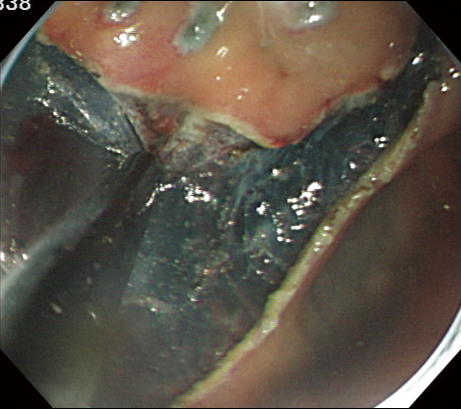
| Device | Caution | Countertraction | Setting | ||
|---|---|---|---|---|---|
| ITknife2 | Use the SwiftCoag mode mainly.If coagulation is too strong, the EndoCut mode can also be used. | By twisting the endoscope or using a distal attachment. | EndoCut Q Effect2 Cut duration 2 Cut interval 2 |
EndoCut 80W Effect3 |
PulseCut fast 60W |
| SwiftCoag 60W Effect5 |
Forced 50W | ForcedCoag2 50W |
|||
| Device | Caution | Setting | ||
|---|---|---|---|---|
| ITknife2 | Begin haemostasis with ITknife2. | SwiftCoag 60W Effect5 |
Forced 50W | PulseCut fast 60W |
| Hot biopsy forceps |
Switch to this device when haemostasis with ITknife2 is difficult. | SoftCoag 80W Effect6 |
SoftCoag 80W | SoftCoag 80W |
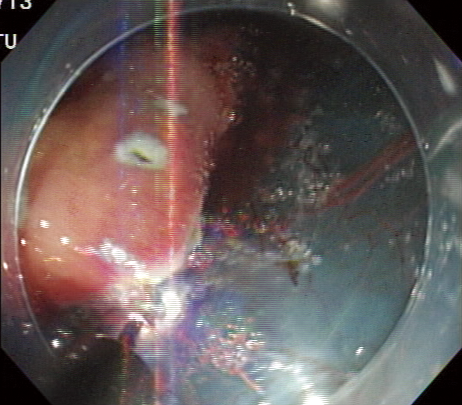
Large vessels should be coagulated using hot biopsy forceps in advance.
When the vessels are plentiful and bleeding is expected, use the SoftCoag mode,
move ITknife2 slowly and bring both effects of cutting and coagulation simultaneously.
| Method | Timing | Tip |
|---|---|---|
| Applying a clip. Prevent blind operation by avoiding bleeding and securing the field of view. | Immediately after perforation if possible. Alternatively, when clips will not come in the way after dissection has been advanced. |
With a small perforation, make the ulcer floors approximate. If large, patching with omentum is easier. |
* May not be available in your area.
- Content Type

